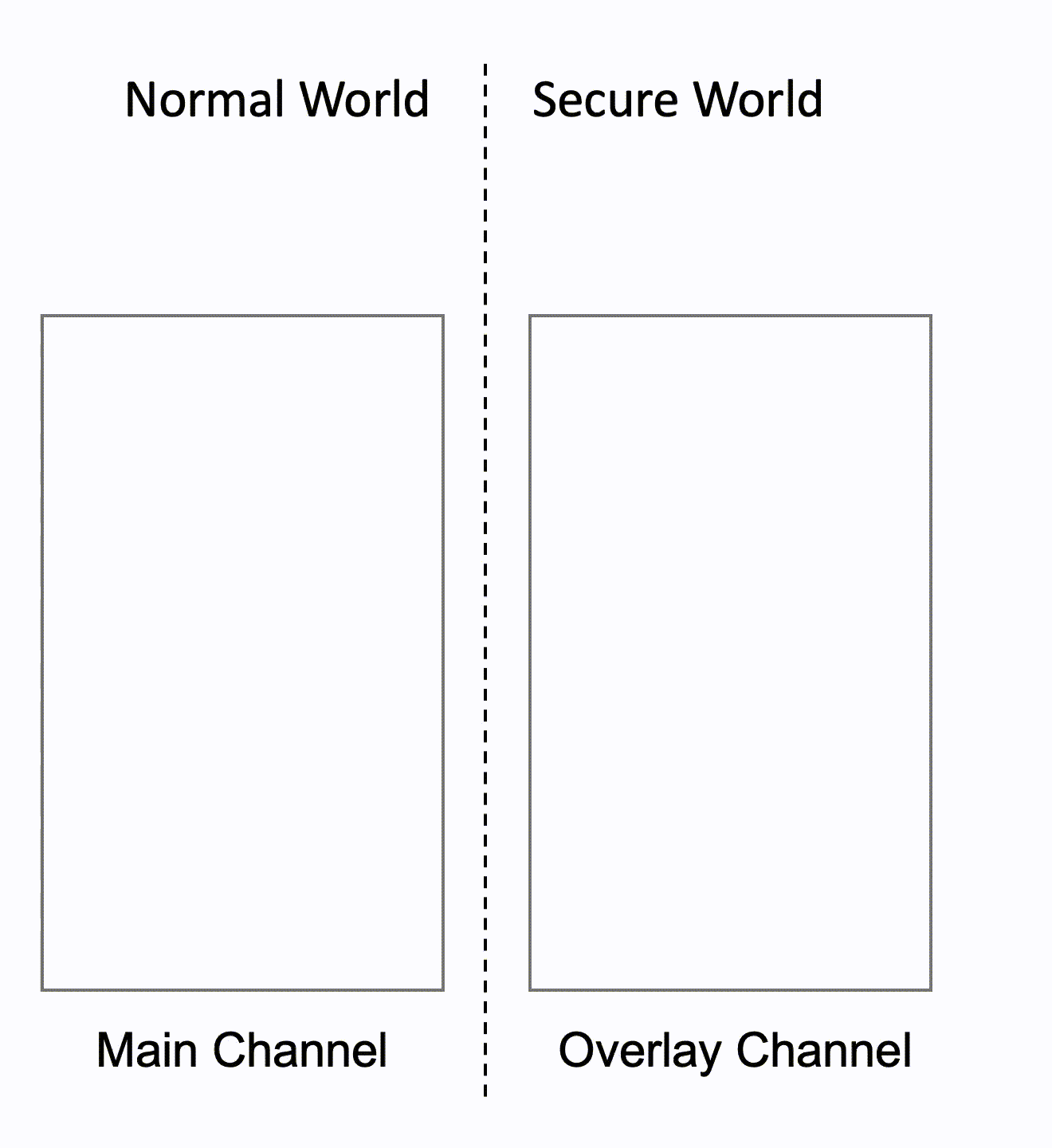The core functionality of Rushmore is to securely decrypt and display encrypted images
(sent by a trusted party) on a mobile device.
Previous apporaches using TrustZone has a critical limitation that, when the trusted domain of TrustZone (the secure world) takes control of the display, the untrusted domain (the normal world) cannot display anything simultaneously. This limitation comes from the fact that previous approaches give the secure world exclusive access to the display hardware to preserve security.
This post shows how we address the limitation by leveraging an overlay channel in image processing unit (IPU) and demonstrates one notable cryptographic method we adapt for Rushmore, visual cryptography, how light it is so that can be alternative to other cryptographic methods for certain use cases.
Here are our contributions:
- Rushmore is capable of displaying from the normal world and the secure world simultaneously.
- Rushmore is capable of displaying animated images in real time at around 30 FPS or higher.
- Rushmore supports visual cryptography as an alternative to regular cryptography.
All other details such as system architecture, how Rushmore provides 30 FPS or higher to display animated images, and evaluations are in the paper.
Our source code is publicy available, and a link for the code is given below a teaser video.
- Artifact Functional and Actifact Available
- Published Paper, Conference Talk (MobiSys `21), Github Repo
Secure Display Multiplexing

Rushmore provides two display channels:
- Normal display channel - displays non-confidential images
- Secure display channel - displays confidential images
Using TrustZone, Rushmore isolates these two channels in two different domains, untrusted (the noraml world) and trusted (the secure world). Every image displayed through the secure display channel is protected and not visible from the normal world.
However, as mentioned in the beginning, previous approaches have a critical limitation that the normal world (untrusted domain) cannot display anything simultaneously while the secure world is displaying a confidential image. This means images in the normal world frame buffer cannot be updated and remain as frozen (e.g., no updates on displayed UIs or no received notifications).
We address the limitation by leveraging image processing unit (IPU). IPU is a media processor widely used in commodity mobile devices for various functions such as noise reduction, sharpening, or rotating. It also provides multiple display channels that can be overlaid and displayed simultaneously on the same device screen, and Rushmore leverages two of the display channels–the main channel and the overlay channel.
Then, we assign the overlay channel to the secure world which means that only the secure world has read/write access to the overlay channel and assign the main channel to the normal world for non-confidential image display. An encrypted confidential image is passed to the secure world, decrypted, and then displayed on the overlay channel. Finally, the confidential image is overlaid with the non-confidential images from the normal world and displayed on the device screen. At this point, even when the OS is compromised, the images on the overlay channel are still protected.
Below animation shows the whole process.

Visual Cryptography
Here’s how visual cryptography works in detail.
- Suppose we have an original image to protect.
- In order to encrypt this image, visual cryptography first generates a key image, which is an image with randomly distributed pixels.
- It then calculates pixel-wise XOR between the key image and the original image to generate an encrypted image
- Now, only a user who has both the key imag and the encrypted image can decrypt.
- To decrypt the original image, the only way is to overlay the key image and the encrypted image together.
Below animation shows how Rushmore adapts the visual cryptography.

- Trusted Server
- Generates a key image using a pseudo random number generator with the same seed shared with the client device
- Generates an encrypted image with the key image and the original image
- Sends only the encrypted image to the client device
- Client Device
- The normal world displays the received encrypted image.
- The secure world generates the same key image using the same pseudo random number generator and the shared seed and displays on the screen.
- Finally, the images from the two worlds are overlaid by the IPU and reveal the original image.
Visual cryptography in Rushmore currently supports only black and white images but outperforms all other crypto methods. Thus, it can be alternative to other cryptographic methods for the case requiring a light-weight method.
